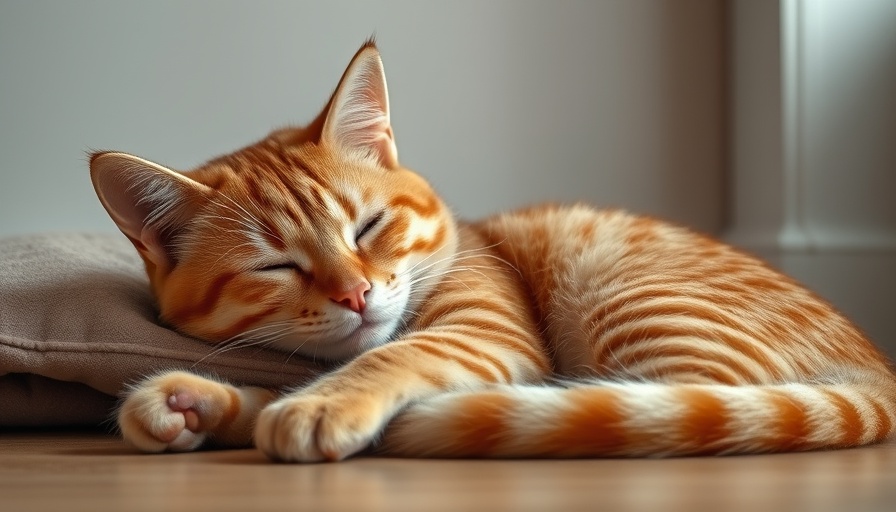
The Purr-fect Celebration of Feline Friendships
Every week, cat lovers across the globe greet the opportunity to celebrate our fur babies through the Catster Photo Contest. This edition has been particularly delightful, showcasing diverse feline characters, each with their unique quirks and heartfelt stories. From cats with the silliest antics to those exuding dignified charm, the contest captures the spirit and personality of our cherished companions.
Meet the Stars of This Week's Contest
This week's contest featured a variety of categories designed to showcase cats in all their glory. The overarching winner, Simba, a Domestic Shorthair, stole hearts with his adventurous spirit and cozy demeanor. Known for his playful personality, Simba not only loves napping but also enjoys cuddling with his family, highlighting the relationship dynamics that are so important to feline welfare.
Leading the category for the silliest entry was Abang Oyen, another Domestic Shorthair, whose odd sleeping positions got him the title. Observing the carefree nature of Abang Oyen reminds us how cats, in their purest forms, can uplift our emotional health and well-being. Their antics often serve important roles in our lives, easing stress and fostering joy.
Why Cat Competitions Matter
Pet competitions like the Catster Photo Contest offer not just fun and entertainment; they provide us with a deeper understanding of the bond we share with our pets. For veterinarians and vet techs, observing such interactions can yield insightful perspectives on feline behavior and the emotional health of pets. Reports indicate that when people engage positively with animals, it boosts mental health, which reigns true in homes across America.
Social Connections: The Heart of Pet Parenting
Every submitted photo comes with not just an image but a narrative of love, connection, and shared moments between cats and their humans. For pet grief counselors and advocates, every story serves as a reminder of the emotional ties that bind families to their pets, reinforcing the importance of support systems when a beloved pet passes. Embracing these stories allows communities to connect over shared experiences, facilitating bonds that extend beyond mere caregiving.
The Ripple Effect of Loving Cat Ownership
Understanding the roles cats play in their owners' lives stretches to various areas of the pet care industry. Pet food manufacturers are constantly looking to improve their products based on the learned behaviors and health needs of our feline friends highlighted through such interactions. Trainers and groomers will use these insights to ensure they are meeting the expectations of cat parents regarding the welfare of their pets.
Looking Forward: Trends in Cat Enthusiasm
The joy seen in these contests illustrates a burgeoning trend where cat ownership isn't just a hobby, but a lifestyle choice. This reflects a growing interest in creating cat-friendly environments, spurring catio builders and pet accessory developers to innovate solutions. As cat ownership continues to grow, so too does the opportunity for sustainable products designed for pets, enhancing their quality of life while aligning with eco-conscious values.
Getting Involved: Join the Community of Cat Lovers
For those passionate about cats, getting involved in local pet competitions or fostering programs can create lasting memories while also working to improve the welfare of animals. Rescue organizations benefit from the visibility gained through such contests, inspiring others to adopt and give homes to strays and the less fortunate. Sharing moments that highlight the charm of cats can motivate community members to contribute positively to the pet care movement.
Let Each Cat's Individuality Shine
Every cat has a unique story waiting to be told. Embracing the idiosyncrasies of each pet can lead to greater awareness of their needs and how best to care for them. Just as Simba and Abang Oyen have shared their stories, your cat has a tale that can enrich not only your life but those in your community as well.
As we look ahead, remember that sharing the magic of our feline companions unites us. Engage with your pet, take stunning photos, and consider entering future contests that celebrate the beauty and distinctiveness of your beloved cats.
 Add Row
Add Row  Add
Add 




Write A Comment